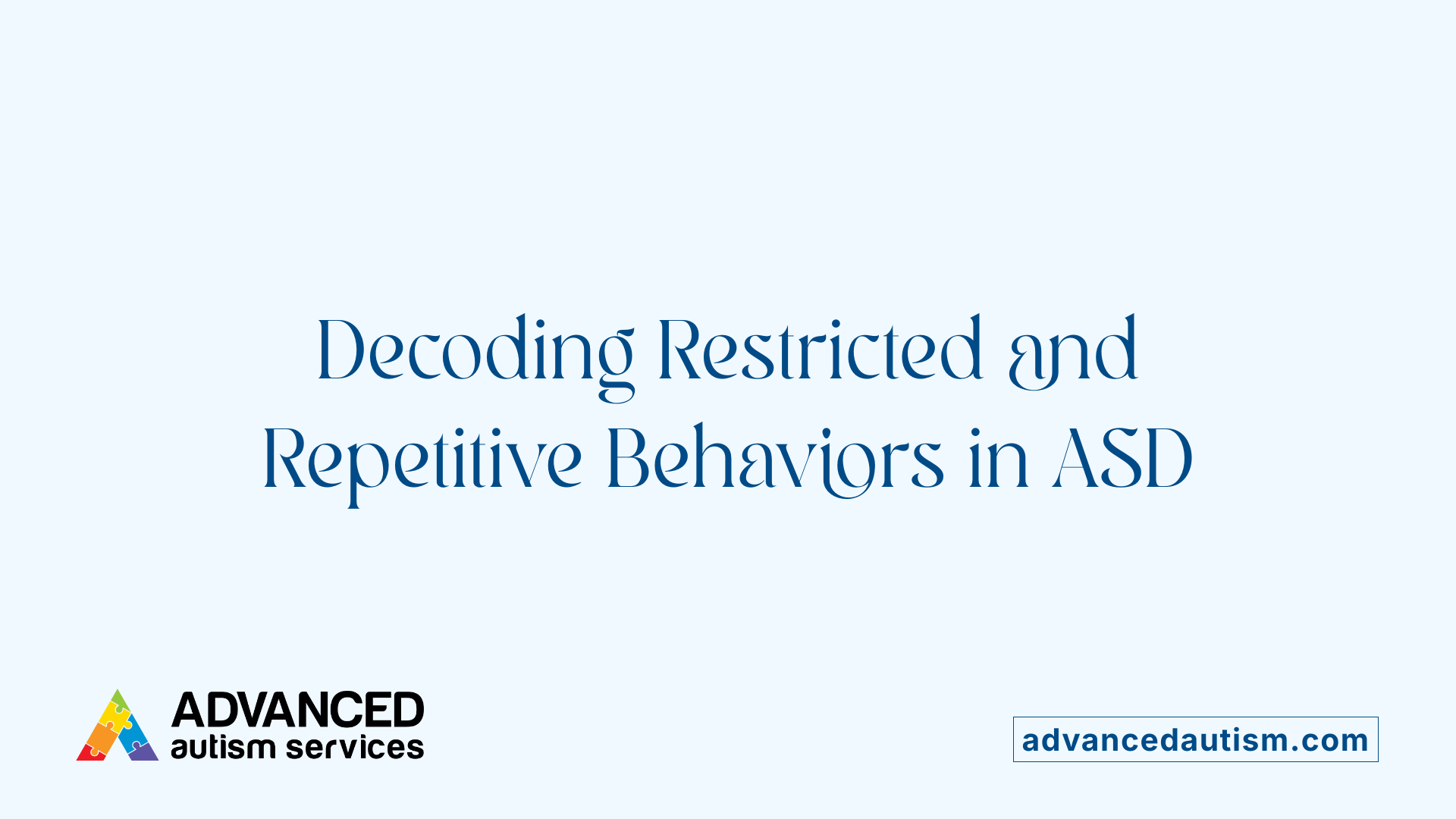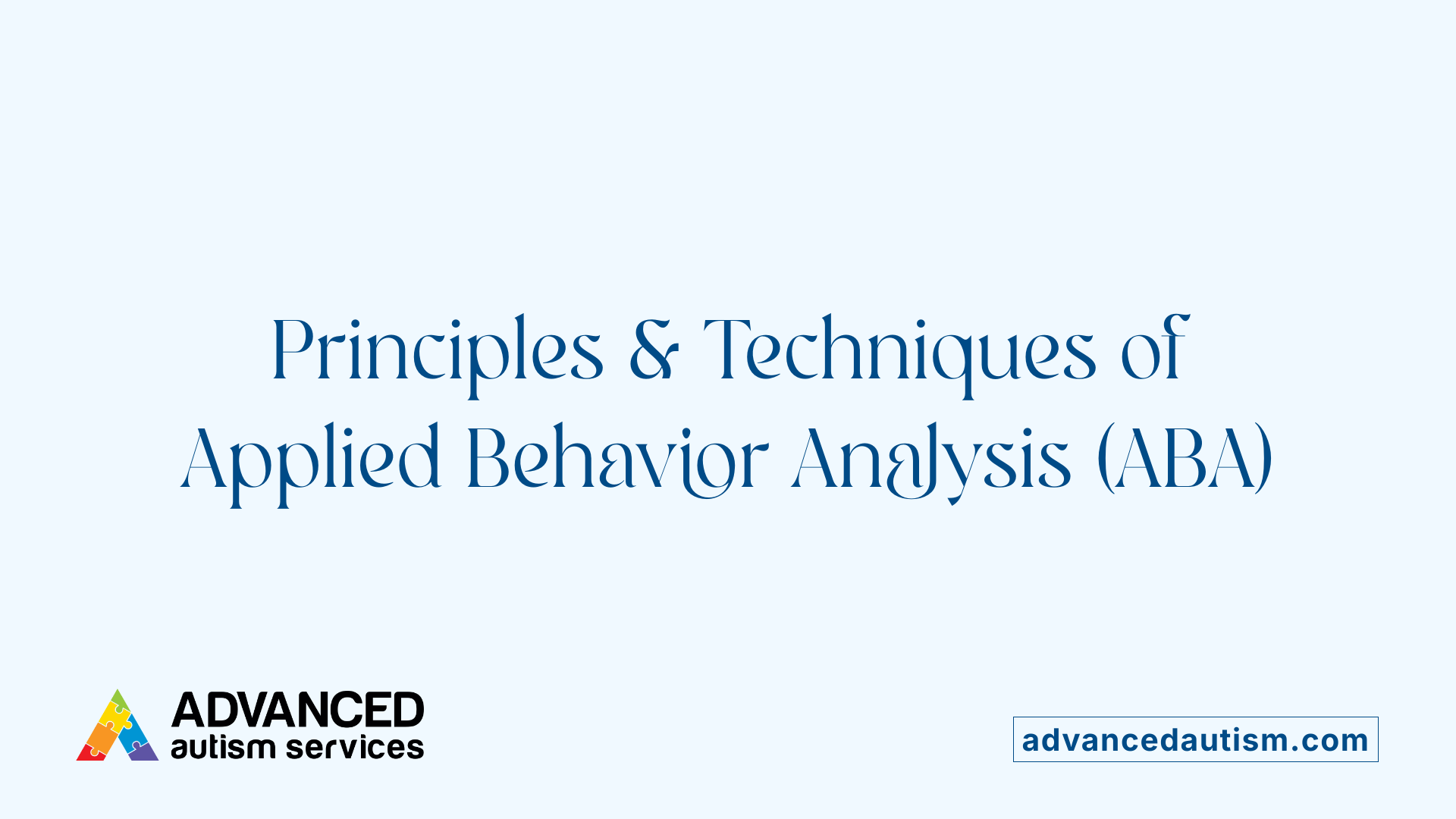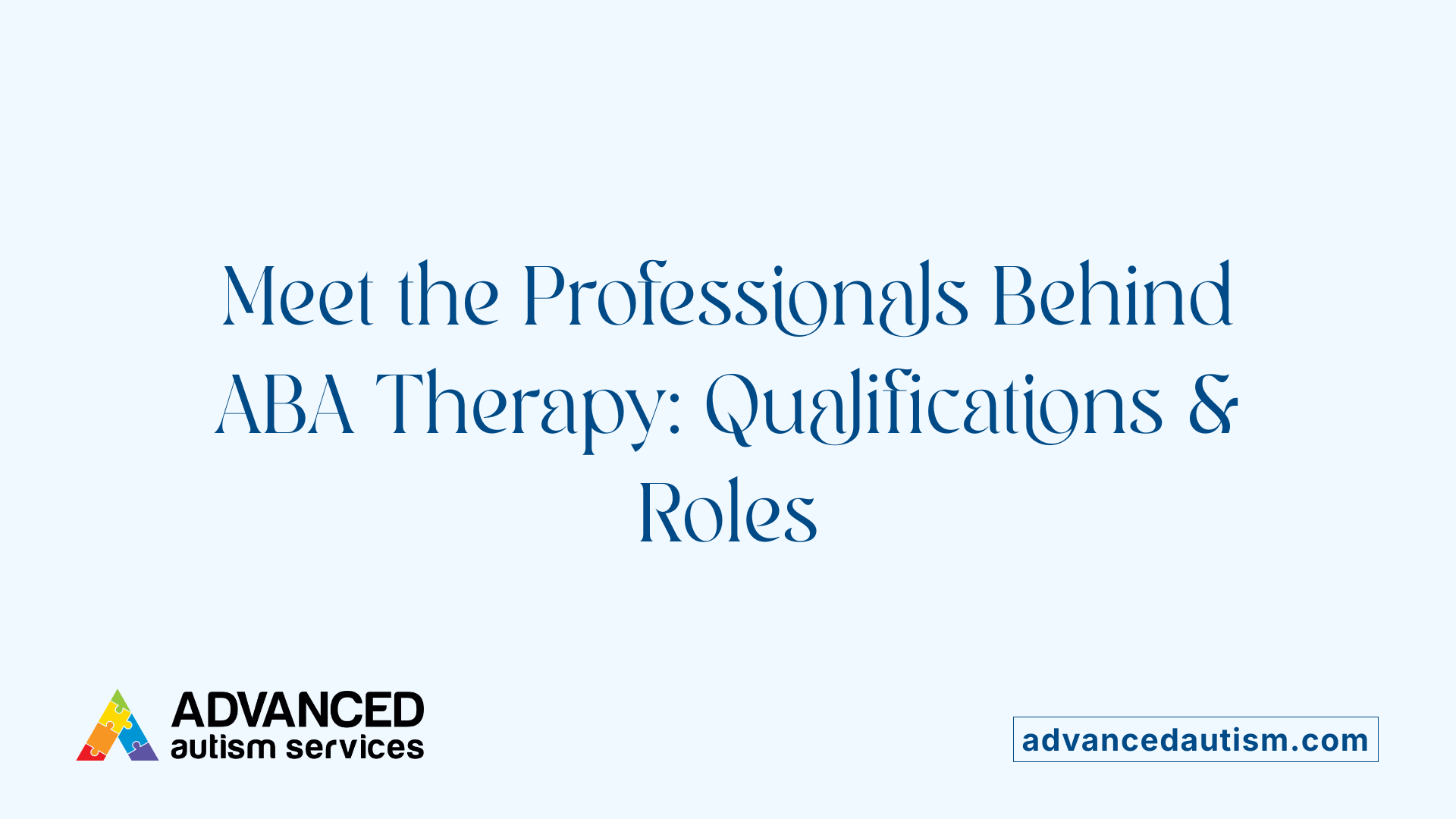Autism Diagnostic Criteria (DSM-5)
Understanding Autism Spectrum Disorder Through DSM-5 Criteria and Treatment Approaches
Setting the Stage: What Autism Diagnosis Entails
Autism Spectrum Disorder (ASD) is a complex neurodevelopmental condition characterized by challenges in social communication and restricted, repetitive behaviors. The American Psychiatric Association's DSM-5 provides the standardized diagnostic criteria used globally to assess and diagnose autism. Understanding these criteria is crucial for professionals, caregivers, and those affected by autism to facilitate early diagnosis and effective intervention strategies, including behavioral therapies such as Applied Behavior Analysis (ABA). This article explores the DSM-5 diagnostic framework, the underlying symptoms, severity levels, and the role of evidence-based treatments for individuals with ASD.
DSM-5 Diagnostic Criteria for Autism Spectrum Disorder
What are the core diagnostic criteria for Autism Spectrum Disorder according to DSM-5?
The DSM-5 defines Autism Spectrum Disorder (ASD) by two main categories of symptoms: persistent deficits in social communication and social interaction, and restricted, repetitive patterns of behavior or interests.
Key areas defining ASD diagnosis
The social communication deficits include problems in three specific areas:
- Social-emotional reciprocity: Challenges with back-and-forth conversation, sharing interests or emotions, and responding appropriately in social exchanges.
- Nonverbal communicative behaviors: Difficulties with eye contact, facial expressions, body language, and understanding nonverbal cues.
- Developing and maintaining relationships: Trouble with adjusting behavior to different social contexts, making friends, and engaging in imaginative play.
Restricted and repetitive behaviors
Individuals must display at least two types of these behaviors:
- Stereotyped or repetitive speech, motor movements, or use of objects.
- Insistence on sameness and strict adherence to routines.
- Highly restricted, fixated interests that are intense or unusual.
- Hyper- or hypo-reactivity to sensory input or unusual interest in sensory aspects of the environment.
Early developmental onset and clinical impairment
These symptoms must be present in the early developmental period but might not fully manifest until social demands exceed the individual's capacities. Importantly, symptoms should cause significant impairment in social, occupational, or other critical areas of functioning and cannot be better explained by intellectual disability or other developmental disorders.
DSM-5 classification updates from previous autism diagnoses
The DSM-5 combined previously separate diagnoses—such as autistic disorder, Asperger's disorder, and pervasive developmental disorder-not otherwise specified (PDD-NOS)—into one diagnosis: Autism Spectrum Disorder. It allows for specifiers to indicate associated intellectual or language impairments and co-occurring conditions.
Severity levels and support needs
ASD symptoms are categorized into three severity levels based on the amount of support needed:
- Level 1: Requiring support.
- Level 2: Requiring substantial support.
- Level 3: Requiring very substantial support.
This classification helps guide intervention intensity and support planning, reflecting how social communication challenges and restricted behaviors impact daily functioning.
Social Communication Challenges in Autism Spectrum Disorder

What specific social communication difficulties are identified in DSM-5 for autism diagnosis?
The DSM-5 outlines three main areas of social communication deficits that are necessary to diagnose autism spectrum disorder (ASD). These challenges must persist across various settings and contexts to meet the diagnostic criteria.
Difficulties in Social-Emotional Reciprocity
Individuals with ASD often have trouble engaging in typical social exchanges. This includes difficulties in starting or responding to conversations, sharing interests or emotions appropriately, and understanding social cues that govern back-and-forth interactions. For example, they may not engage in typical give-and-take during conversations or may struggle to initiate or respond to social overtures.
Nonverbal Communication Difficulties
Problems with nonverbal communicative behaviors are common and include atypical eye contact, unusual facial expressions, and challenges with body language or gestures. These deficits impact how individuals express or interpret emotions and social cues, leading to misunderstandings and difficulties in social interactions.
Problems with Relationship Development and Maintenance
The ability to develop, maintain, and understand relationships appropriate to one's developmental level is often impaired. This can be seen in difficulties making friends, engaging in imaginative or pretend play with peers, or understanding social nuances and conventions. Such problems hinder social integration and the development of meaningful relationships.
Impact on Daily Functioning
These social communication deficits cause significant impairment in daily life, affecting academic achievements, occupational success, and interpersonal relationships. The persistent nature of these challenges means individuals may require varying levels of support to navigate social environments effectively.
The combination of these deficits in social communication highlights why diagnosis often involves observations across multiple contexts and reports from caregivers and professionals alike.
Restricted and Repetitive Behaviors in ASD: Diagnostic and Functional Perspectives

Behavioral patterns required for diagnosis
To be diagnosed with Autism Spectrum Disorder (ASD) under DSM-5 criteria, individuals must exhibit at least two types of restricted and repetitive behaviors. These patterns form one of the two core symptom domains necessary for diagnosis, alongside social communication difficulties.
Examples of stereotyped behaviors and interests
The specified behaviors include repetitive motor movements such as hand-flapping, stereotyped speech patterns, and repetitive use of objects. Additionally, individuals may strongly prefer sameness, showing rigid adherence to daily routines or ritualized verbal or nonverbal behaviors. There may also be intensely focused interests that are extraordinarily specific or consuming in nature.
Sensory sensitivities and routines adherence
Sensory processing differences are recognized as well, manifesting as hyper- or hypo-reactivity to sensory stimuli. Examples include unusual fascination with certain sounds, textures, or lights, or apparent indifference to pain or temperature. These sensory sensitivities often intertwine with behaviors emphasizing strict routine adherence.
Developmental manifestation and impact
These restricted and repetitive behaviors typically emerge during early developmental periods. However, some may not be fully evident until social demands exceed the individual’s capacity or adaptive strategies mask them. The persistence and intensity of these behaviors usually contribute to significant challenges in daily functioning.
Severity categorization related to repetitive behaviors
The DSM-5 classifies severity levels for ASD based partly on the extent of restricted and repetitive behaviors. Severity ranges from Level 1, where support is needed, to Level 3, requiring very substantial support. This categorization helps tailor interventions based on how much these behaviors impede social communication and daily activities.
| Aspect | Description | Impact on Diagnosis and Functioning |
|---|---|---|
| Restricted Repetitive Behaviors | Includes repetitive movements, speech, intense interests, adherence to routines | Required for ASD diagnosis; influences support needed |
| Sensory Sensitivities | Hyper- or hypo-reactivity to sensory input such as sounds, textures, or light | May complicate daily functioning; intervention target |
| Developmental Onset | Symptoms present in early childhood, though sometimes masked until social demands grow | Important for accurate diagnosis across lifespan |
| Severity Levels | Level 1 to Level 3 based on behavior intensity and support required | Guides intervention strategies and resource allocation |
Diagnosis Process: Tools, Professionals, and Assessment Methods

Role of multidisciplinary professionals
Diagnosing Autism Spectrum Disorder (ASD) typically involves a team of specialists including developmental pediatricians, child neurologists, psychologists, and psychiatrists. These professionals collaborate to gather information, observe behaviors, and rule out other conditions. Their combined expertise ensures a thorough assessment across developmental stages.
Caregiver input and behavioral observation
Caregiver descriptions of a child's behaviors and developmental history play a vital role in the diagnostic process. Professionals complement this with direct observation of the individual's behavior in multiple contexts to identify symptoms such as challenges in social interaction and repetitive behaviors.
Use of standardized instruments like ADOS, ADI-R
Standardized diagnostic tools are essential for structuring assessments. The Autism Diagnostic Observation Schedule (ADOS) and Autism Diagnostic Interview-Revised (ADI-R) are among the most widely used instruments. ADOS involves direct interaction and observation, while ADI-R is an extensive caregiver interview addressing developmental history and behavior patterns. Other tools include the 3di, DISCO, and CARS-2 for children, and assessments like the Adult Asperger Assessment (AAA) for adults.
Diagnostic differentiation and lifespan applicability
The DSM-5 criteria enable diagnosis throughout the lifespan, accommodating changes by considering current and past functioning. Differentiation from intellectual disabilities or other psychiatric conditions is critical to ensure accurate diagnosis. The DSM-5-TR update further refines diagnostic clarity, particularly for autism spectrum presentations across ages.
Importance of clinical judgment alongside tools
While diagnostic instruments provide a framework, clinical judgment is paramount. Experienced clinicians integrate findings from interviews, observations, and tests, alongside detailed developmental histories, to finalize diagnoses. This holistic approach helps navigate nuances not fully captured by standardized tools, ensuring individualized and precise assessments.
Applied Behavior Analysis (ABA) Therapy: Principles and Implementation

What is Applied Behavior Analysis (ABA) therapy and how is it used for individuals with autism?
Applied Behavior Analysis (ABA) therapy is a scientifically grounded approach designed to improve specific behaviors and skills in individuals with autism. It leverages principles of learning and behavior, focusing on how environmental factors impact actions. The core idea is to systematically teach desirable behaviors and reduce challenging ones by using reinforcement strategies.
Foundational Principles of ABA
ABA operates by identifying antecedents (what happens before a behavior), behaviors themselves, and consequences (what happens after). Positive reinforcement—a rewarding consequence following a behavior—increases the likelihood of that behavior occurring again.
Implementation Techniques
ABA therapy uses structured methods such as:
- Discrete Trial Training (DTT): Breaks complex skills into small, teachable parts practiced repeatedly.
- Pivotal Response Treatment (PRT): Targets pivotal areas like motivation and self-management, promoting improvements across multiple areas.
- Early Start Denver Model (ESDM): Combines ABA principles with developmental approaches, tailored especially for young children.
Personalized Interventions
Intervention plans begin with detailed assessments performed by certified behavior analysts (BCBAs). These assessments help customize goals targeting communication, social skills, self-care, academics, and motor abilities. Therapy adjusts over time depending on the child’s progress and needs.
Evidence of Effectiveness
Research consistently supports ABA as an effective treatment for autism. It enhances social interactions, language acquisition, and adaptive functioning. Early and intensive ABA interventions have shown particularly strong outcomes.
These approaches collectively provide a flexible, evidence-based framework that supports meaningful developmental gains and improved quality of life for individuals with ASD.
ABA Therapy Providers and Their Qualifications

Who Provides ABA Therapy and What Qualifications Do Professionals Typically Have?
ABA therapy is primarily delivered by Board Certified Behavior Analysts (BCBAs) and Registered Behavior Technicians (RBTs).
BCBAs are highly trained professionals holding graduate-level degrees in behavioral science and certification from the Behavior Analyst Certification Board (BACB). Their advanced education prepares them to create and oversee individualized treatment plans based on the principles of Applied Behavior Analysis.
RBTs typically receive specialized training and certification to provide direct, hands-on intervention with clients. They operate under the close supervision of BCBAs, ensuring therapy implementation aligns with established treatment goals.
Credentials of BCBAs and RBTs
- Board Certified Behavior Analyst (BCBA): Requires a master's degree in behavior analysis or a related field, rigorous coursework, supervised fieldwork, and passing a comprehensive certification exam.
- Registered Behavior Technician (RBT): Requires completion of a 40-hour training program, competency assessment, and supervision by a BCBA or other qualified professional.
Training and Ethical Standards
Both BCBAs and RBTs adhere to ethical guidelines established by the BACB, emphasizing client dignity, confidentiality, and evidence-based practice. Training focuses on understanding behavioral principles such as antecedents, behaviors, and consequences to promote positive skill development.
Supervision and Individualized Treatment Planning
BCBAs maintain responsibility for designing and regularly monitoring individualized behavior intervention plans. They provide ongoing supervision and training to RBTs to ensure therapy quality and effectiveness. This team approach allows for tailored interventions responsive to each individual's needs and progress.
Key Benefits and Structure of ABA Therapy Programs
What are the key benefits of ABA therapy for individuals with autism?
ABA therapy offers numerous advantages for individuals with autism by fostering development in communication, social interaction, and self-care. This evidence-based approach uses positive reinforcement and a deep understanding of the environmental factors influencing behavior to enhance positive actions and reduce negative ones.
Beyond improving intellectual functioning and language development, ABA helps develop daily living skills and social capabilities, promoting greater independence. Early and intensive ABA interventions yield significant improvements in socialization, emotional regulation, and expressive language. Additionally, ABA equips children with coping strategies, helps them interpret social cues, and prepares them for real-world scenarios.
How is an ABA therapy program typically structured and personalized?
An ABA therapy program begins with a comprehensive assessment by a Board Certified Behavior Analyst (BCBA), who pinpoints an individual's strengths and targeted growth areas. From this, a customized intervention plan is crafted featuring specific, measurable goals focused on communication, social skills, daily living competencies, and reducing challenging behaviors.
The program utilizes methods like reinforcement, task analysis, prompting, and fading to teach and generalize new skills. Progress is regularly monitored to adapt treatment as needed. Therapy intensity and duration are carefully tailored, commonly starting with early intensive intervention during critical developmental windows and adjusting over time to meet evolving needs.
Integral to ABA is family involvement and collaboration, ensuring therapy goals align with the child's natural environment, making the interventions meaningful and more effective. This comprehensive, personalized structure maximizes the therapeutic benefits and supports lasting development.
From Diagnosis to Intervention: The Path Forward in Autism Care
The DSM-5's comprehensive criteria provide an essential framework for accurately diagnosing Autism Spectrum Disorder across all ages, emphasizing early developmental onset, social communication deficits, and restrictive behaviors. Understanding these criteria enables healthcare professionals to identify the spectrum and tailor treatments accordingly. Among available interventions, Applied Behavior Analysis therapy stands out for its evidence-based, personalized approach that significantly enhances communication, social skills, and independence. Qualified professionals deliver ABA through structured, goal-oriented programs that adapt to individual needs and involve family participation. Together, precise diagnosis guided by DSM-5 and early, intensive behavioral interventions offer the most promising path to improving lives of those with autism, empowering them to reach their full potential.
References
- Autism diagnostic criteria: DSM-5
- Clinical Testing and Diagnosis for Autism Spectrum Disorder
- Autism Spectrum Disorders: Diagnosis and Treatment - NCBI
- Diagnostic Criteria for Autism Spectrum Disorder in the DSM-5
- Criteria and tools used in an autism assessment
- What Is Autism Spectrum Disorder?
- DSM-5 AUTISM SPECTRUM DISORDER
- Applied Behavior Analysis (ABA)







